new posts in all blogs
Viewing: Blog Posts Tagged with: poland, Most Recent at Top [Help]
Results 1 - 25 of 52
How to use this Page
You are viewing the most recent posts tagged with the words: poland in the JacketFlap blog reader. What is a tag? Think of a tag as a keyword or category label. Tags can both help you find posts on JacketFlap.com as well as provide an easy way for you to "remember" and classify posts for later recall. Try adding a tag yourself by clicking "Add a tag" below a post's header. Scroll down through the list of Recent Posts in the left column and click on a post title that sounds interesting. You can view all posts from a specific blog by clicking the Blog name in the right column, or you can click a 'More Posts from this Blog' link in any individual post.

By: Jerry Beck,
on 11/8/2016
Blog:
Cartoon Brew
(
Login to Add to MyJacketFlap)
JacketFlap tags:
CGI,
Feature Film,
Poland,
Portugal,
Platige Image,
Mulan,
Imaginew,
Jarosław Sawko,
Philip LaZebnik,
Pochahontas,
Add a tag
We've got a first-look at a promising feature from a top Polish animation studio.
The post Platige Image Releases Teaser For New Feature ‘Fatima’ appeared first on Cartoon Brew.
Parts of our trip to Poland were indeed harrowing (see previous post here), but much of it was hugely enjoyable. Named one of the most beautiful cities in Europe by Conde Nast, Krakow is a delight. The picture-perfect Old Town has a mediaeval market square, a castle overlooking the river, quaint courtyards and cobbled thoroughfares. Oh yes, and just about everyone under the age of fifty speaks English, which was very helpful because neither of us speak Polish. Plus the food is wonderful, and the majority of menus are written in Polish and English.
Preparations for World Youth Day and a visit from Pope Francis were in full swing when we arrived. A countdown clock in the city centre was counting down the days and hours until the event and Cracovians were gearing up for a large influx of visitors. By the time you read this World Youth Day will be over and no doubt the cleaning up will be well underway. Evening in Main Market Square, to the left is St. Mary's Church with its towers of different types and appearances and beside it St. Adalbert's Church.
The loftier Hejnalica tower is 81 m tall, while its companion bell tower rises to 69 m. Every hour on the hour, a bugler sounds the “Hejnal” bugle-call from the west window just below the spire of the higher tower. Next the same bugle call is played towards the east, the south and the north but each time the melody ends abruptly.
The Henjal, dates back to the Middle Ages when it was played to announce the opening and closing of the city gates. The bugler also played to alarm his fellow citizens whenever he saw a fire or an enemy approaching. The abrupt ending is said to commemorate a trumpeter from Krakow who was shot through the throat by a Tatar archer in 1241 when the Mongols besieged the city. The imposing interior of St. Mary's with its nave and two aisles; in the background is the pentaptych alter by Veit Stoss.
The market square and the streets around it are always busy;
We didn't take many photos of ourselves, but these two should make you smile. I’m not sure why this chap decided to dress me up in his hat and sword, but I got off lightly compared to Terry!
I’ve done lots of reading over the last few weeks, mostly thanks to recommendations from other book bloggers and my local Waterstones. If you want to find out more about any of these, please follow the links.
In a dark dark wood a wonderful debut novel from author Ruth Ware: Review by Curious Ginger Cat
Bloom of youth by Rachel Anderson: This was a spur-of-the-moment charity shop buy which I love. It's funny and yet melancholic and very much of my era set as it is in the 1950s. Ruth and her older sister Mary struggle with the chaos of their parents' attempts to support five children by renting a rambling country house and running it as a holiday home for children. When their father dies, their increasingly desperate mother turns her efforts to the two hapless girls. Eager to marry them off, she plunges them into dancing classes and presentation at Buckingham Palace as phoney under-age debutantes. There are two more books in the series, both now added to my must-read list.
Black eyed Susans by Julia Heaberlin a dazzling psychological thriller, shocking, intense and utterly original. Lit Lovers

84 Charing Cross Road by Helene Hanff: A series of letters sent by Helene Hanff to the staff at Marks & Co, Booksellers in London and their replies to her. I loved it! Reviews at Goodreads
The shepherd's life by James Rebanks: My favourite book of the year so far recommended by my local Waterstones and reviewed by Mark Avery
~~~~~~~~~~~~
Thanks for your company. Just one more holiday snap before I go...
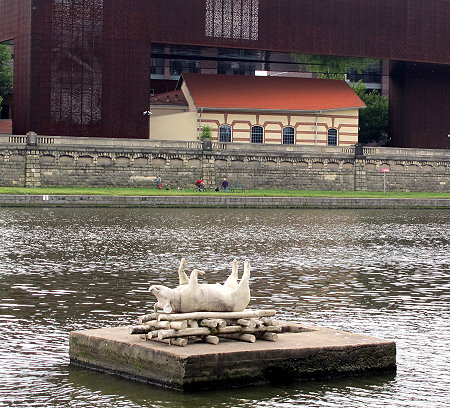
This photograph only came about because I was fascinated by what appeared to be a tiny house dwarfed by a factory or office complex. The larger building is constructed in such a way that it straddles the smaller one. Even odder is the upside-down pig in the centre of the Wisla (Vistula) river. A local tour guide had no idea of its meaning, but an online search revealed the following;
"Mateusz Okonski, a Krakow-based artist, issued a challenge to his city's inhabitants - instead of following the local "tradition" and putting up another horrid monument, he offered a realistic sculpture presenting a dead boar at the stake. He located it in a place full of various meanings: in the vicinity of national sanctities - St. Stanislaus Church at Skalka and the church at Wawel, between two former abodes of the Jewish population - Kazimierz and Podgórze, in the area of the former municipal slaughter-house, which is currently a shopping gallery, on the water that purifies both literally and metaphorically and evokes the topic of passing and change and, finally, on the concrete pillar of the Wanda well, which was a water intake for the formerly existing power plant".
That last piece of information answered the question about the origin of the building, and this confirmed it;
Situated on the banks of the Vistula‚ just above the embankment wall‚ Cricoteka does not try to blend in with its neighbourhood nor gently catch the eye of passers-by. Indeed‚ it stands out like a strange theatrical prop that’s landed on the riverbank as part of a performance. One prerequisite of the original architectural competition was that an existing power station on the site should be adapted and integrated with the new structure. So the architects designed their new building to stretch over the old‚ like a table on two legs‚ with a hole cut through it for the latter’s chimney to poke through. This design was inspired by artist Tadeusz Kantor’s drawing of a bent man carrying a table on his back and his idea of an object or work of art integrated with a human body. via Uncube Magazine Blog
So there you have it!
Next week I will be sharing a delightful guest post by Dagny McKinley.
Hello, I’m back from my break and looking forward to catching up with you all. If you have a question or would like to leave a comment, please do, I love to hear from you.
Taking a blogging break gave me the opportunity to read some of the books I've accumulated over the last few years. Unfortunately or perhaps fortunately I can never resist buying more so the size of my must-read pile remains virtually unchanged! One new book on the list is The Kracow Ghetto Pharmacy by Tadeusz Pankiewicz. I heard about it on a recent trip to Poland and was lucky enough to find a copy at The Oskar Schindler Factory Museum (Fabryka Schindlera). Tadeusz Pankiewicz was the only Pole living and working in the Kracow Ghetto from its inception to its liquidation. I’m sure it won’t be an easy read but when was anything worthwhile ever easy? Having seen the remnants of the ghetto walls and visited Auschwitz and Birkenau the Holocaust is uppermost in my mind.
This is the entrance to Auschwitz with the words “arbeit macht frei” which translated means “work will set you free."
According to the BBC historian Laurence Rees the sign was erected by order of Commandant Rudolf Höss. Made by prisoner-labourers the sign features an upside-down B, which has been interpreted as an act of defiance. We thought we were ready for Auschwitz, but nothing prepared us for the overwhelming sense of sadness that prevails. The feeling of the place seeps into your bones and will not be left behind.
The complex is divided into three major camps: Auschwitz I, Auschwitz II-Birkenau, Auschwitz III-Monowitz and several sub-camps. During the Holocaust gas chambers using Zyklon-B claimed the lives of roughly one million people. Most of the victims were Jews, and the majority killed in this way died at Auschwitz II-Birkenau.
Auschwitz III provided slave labour for the I G Farben plant founded at Auschwitz in 1940. Farben produced synthetic rubber, along with high-performance fuels, various plastics, methanol, nitrogen and pharmaceuticals. The Zyklon B gas used in the gas chambers was produced by Degesch a subsidiary of I G Farben.
Auschwitz II - Birkenau
Entrance to the infamous Auschwitz - Birkenea death camp.
Several of the buildings have been converted from barracks into museum rooms. The rooms are used to house the "Material Evidence of Crime." This consists of piles of shoes, glasses, suitcases, kitchen utensils and the most chilling of all human hair. The Nazis not only murdered millions of men, women and children, they also "harvested" some of the remains. In the early nineteen-forties, a brisk trade emerged between the death camps, and German felt and textile manufacturers who used the hair in the production of thread, rope, cloth, carpets, mattress stuffing, and felt insulators for the boots of railroad workers. According to historians, it's quite possible some of the products are still in use in German homes today. Auschwitz I
The collection of shoes is possibly one of the saddest things I’ve ever seen. Most are in the same dark grey colour, but a few are made from red leather, a poignant reminder of the red coat worn by the little girl in the film Schindler’s list. The guide who accompanied us around the museum said it will soon be 'updated' with new interactive exhibits. I’m not so sure that is a good idea. At the moment it is a stark reminder of just what humans are capable of and maybe it needs to remain that way. Shoes and clothing of prisoners found at Auschwitz-Birkenau
Photo Credit: US Holocaust Memorial Museum
~~~~~~~~~~~~~~~~~~~~~~
If you are planning a visit to Auschwitz expect a tough day in more ways than one. Don’t assume you will find wheelchair access or level paths because you won’t. The site is not disabled friendly. It is also far larger than I ever imagined, and the only way to see it is to walk. We didn't find it too much of a problem, but if you have difficulty getting around do check before finalising any arrangements.
I'm sorry this is a sad post, especially as it’s the first one for a while. I promise the next one will be more cheerful
Never ending loops of people seeking to be ideal.
The post ‘Loop’ by Michal Socha appeared first on Cartoon Brew.

By: Jerry Beck,
on 4/25/2016
Blog:
Cartoon Brew
(
Login to Add to MyJacketFlap)
JacketFlap tags:
CGI,
Feature Film,
Poland,
Stop Motion,
Gore Verbinski,
Industrial Light & Magic,
Bartez Putkiewicz,
FremantleMedia Polska,
Greg Jonkajtys,
Jagna Dobesz,
Jakub Jakielaszek,
Mikolai Stroinski,
Orka,
Piotr Jasek,
T.F.P. Poland,
Teddy Floppy Ear,
Add a tag
Visual effects veteran Greg Jonkajtys is giving a high-tech upgrade to a classic Polish children's property.
The post First Look: ILM Artist Greg Jonkajtys Is Developing A ‘Teddy Floppy Ear’ Feature appeared first on Cartoon Brew.

By: Jerry Beck,
on 4/3/2016
Blog:
Cartoon Brew
(
Login to Add to MyJacketFlap)
JacketFlap tags:
Feature Film,
Poland,
Juice,
Platige Image,
Another Day of Life,
Flat Foot Films,
Julita Olszewska,
Marcin Karolewski,
Platige Films,
Add a tag
The concept trailer for the project was presented last month at Cartoon Movie.
The post Polish Animators Tease ‘Privisa,’ A Fantasy Animated Feature appeared first on Cartoon Brew.

By: JOANNA MARPLE,
on 12/9/2015
Blog:
Miss Marple's Musings
(
Login to Add to MyJacketFlap)
JacketFlap tags:
Interview,
picture book,
picture books,
Poland,
Illustrators,
nursery rhymes,
Charlesbridge,
GABE AND GOON,
Iza Tripani,
Add a tag
I have known Iza several years and enjoy following a really consistent strong book career. We also share a love of hiking and covered bridges! And Iza is not the first Polish illustrator I have had on my blog!
[JM] Illustrator … Continue reading →
It's 1945 and the war is over but not the danger. Felix, now 13, and Gabriek are hiding out in a relatively safe albeit rather wrecked building, and have one simple rule - Stay quiet and out of sight. There are roving bands of men wearing badges that say Poland for the Poles and never hesitate to shoot anyone who is Polish, and that includes Felix, who is Polish, but he's also Jewish.
The war was hard on Gabriek and Felix who lost quite a few people they loved very much, and now Gabriek spends most of his time sleeping off the cabbage vodka he makes in his still, when not doing repair work to get food for the two of them.
Felix, who wants to become a doctor, goes how on the streets with his "medical bag" and the skills he learned from Doctor Zajak, when he and Gabriek joined the partisans before the war ended. While out looking for people to help, Felix runs into two people - Anya, a mysterious girl wearing a filthy pink coat and carrying a gun, and Dimmi, who threatens the lives of Felix and Gabriek because the lock they fixed for him has broken.
Felix isn't out on the street long before he is kidnapped by the Poland for the Poles thugs who require his "medical services." Luckily, Felix escapes and back on the street, a woman throws her baby to him just before she is shot to death. Felix is immediately smitten by the baby and brings him home to an unhappy Gabriek.
It turns out that Anya is living in an orphanage with other kids under the care of Dr. Lipzyk, who invites Felix to visit his medical library anytime he wants to. But things happen that make Felix uncomfortable about the doctor. First, nothing seems to be done about Anya constant vomiting, then, Felix makes a deal with Anya for an endless supply of powdered milk and other baby needs for Pavlo (yes, Felix and Gabriek name the baby a nice Ukrainian name, since his mother was from the Ukraine), and lastly, the doctor cold attitude toward him when he sees Felix without pants on.
In the post-war danger and chaos in Poland, where hate and bigotry still seem to rule the day, will Felix be able to retain his hopeful spirit that the world will someday be a safe and happy place?
I wasn't expecting a 5th book and I may have jumped the gun a little in my need to find out more about Felix's experiences during World War II when I ordered it from The Book Depository. It's out in Australia, New Zealand and Britain, but I don't know when or if it will be published in the US. But is is do worth reading, even though I didn't get any sense of closure when I finished it - but perhaps that is as it should.
Soon is an action packed novel, partly because Felix is able to go out among people in a way that he hasn't been about to for a long, long time. And amazingly, Gleitzman has managed to keep Felix a consistent character in
Once,
Then,
After, and now
Soon even as he matures, and despite some of the horrific things he has witnessed (I don't count Now because it is about Felix at 80 year old and not told from his point of view). Felix is a character who seems to understand human behavior instinctively even if he does still read some behaviors incorrectly at first, but that is just because he is an optimist. And readers can't help but care about what happens to him.
Soon can be read as a stand alone book, but it would be a much richer experience if readers at least read the first three books. And like all of the Felix and Zelda family of books there is violence, but not sex or bad language.
Once again, Gleitzman has explored themes of family and friendship in the worst of times and written a powerful, appealing novel and now I would really like to know what happens to Felix next, but I have a feeling it's not going to happen this time.
You can read an except of
Soon on Morris Gleitzman's website
HERE
This book is recommended for readers age 12+
This book was purchased for my personal library

A few naked women and children are bathing in a river. They are being secretly observed by a group of men, who, at one point decide to approach them...
Read the rest of this post

By:
Beth Kephart ,
on 6/23/2015
Blog:
Beth Kephart Books
(
Login to Add to MyJacketFlap)
JacketFlap tags:
Poland,
Bookshop,
Krakow,
Wawel Castle,
Alexsandra Kucharska-Cybuch,
Bona,
ETA Hoffman,
Media Rodzina,
Tajemnicze Dziecko,
Add a tag
On another rainy day in Krakow we slipped inside a miniature palace of books. I could have stayed the entire day. I don't know a word of Polish. I didn't know these authors. But the art, the bindings, the printing—it was like stepping back into that time when my mother tucked herself behind a couch and put on puppet shows. It was like sitting with my uncle as he made his fabulous Victorian ornaments—velvet ribbons, pearls, scrapbook faces.
That kind of richness of escape into other worlds.
The store itself, called Bona, was located just down the road from Wawel Castle, but it wasn't a place for tourists. There were pastries in the back, a winding staircase to a stone-faced exhibition room, a reading lounge, and a young woman with impeccable English who helped me understand where Poland is just now, as a reading country. Illustrated picture books like the one I bought, above, exude, she said, a timelessness and also an agelessness; adults find one thing in the story and children another. Young adult books have not yet reached the popularity they have here in the states, perhaps because adults read novels written for adults or spend time with these glorious art-infused picture books. And paper books—the tangible, shelf-able kind—remain a towering favorite, both because of the quality of the art and because digital reading devices can cost up to half a young person's monthly salary.
The number of books in the store wasn't huge. The quality, however, was. It took a long time for me to choose this one, and then another little bit to choose the book I brought home for my friend Karolina, whose stories of a Krakow childhood had brought me to her country in the first place.
This girl on Florianska Street in Krakow, Poland—this girl is loving something. Swooning behind her heavy, lidded eyes. Creating—or recreating—an embrace. What is happening inside her platinum head? Can she ever really tell us?
Love looks like many things. Love takes a fraction of a second to say and a library's worth of fine books to partly parse. In
Kissing in America, Margo Rabb's poetry-riveted novel for young adults, love presents and perpetuates itself in ways both surprising and true.
We think, as we begin, that we are setting out on a journey that will unite the perfect boy with the perfect girl, which is to say two young people whose personal tragedies and imperfections make them deliciously right for one another. Eva, an east coaster, is mourning the loss of her father and the emotional distance of her mother. Will has moved out west to escape his own mother's bankruptcy—and to try to overcome the estrangement with his father. With her genius friend, Eva concocts a scheme that will deliver her to Will's west-coast doorstep. What happens next will teach her lessons she could not have foreseen.
It is a winsome, winning tale—full of Margo's trademark humor and linguistic dignity. It is a story of nuance, of character shades, of a heart pattering and yearning, of a mind settling into a truth. How do we love, and how do we grieve?
Kissing in America is a romance of ideas.

By:
Beth Kephart ,
on 6/1/2015
Blog:
Beth Kephart Books
(
Login to Add to MyJacketFlap)
JacketFlap tags:
Poland,
Handling the Truth,
Going Over,
One Thing Stolen,
Bethlehem Area Public Library,
Moravian Writers' Conference,
Krakow,
Once Upon a Bookcase,
Wawel Castle,
Add a tag
I was away and when I went away, I went away from myself as a writer—extracted myself from the pressures, the confusions, the fears. I read the work of others instead. Walked hours every day through crooked streets with a heavy camera taking photos of
places, of
faces, of
fashion. Ate gelato at any hour. Learned the history of the Polish people, spent time in Schindler's Factory, visited (with a hushed heart) Auschwitz and Birkenau, walked the grounds of Wawel Castle, happily trekked through a dragon's den, and less happily endured the terror of an underground cave with shoulder-wide passageways. Spent beautiful, wonderful, thirtieth anniversary time with the husband who has taken to calling me (I can't imagine why), "Miss Daisy."
(The other husband just calls me "Beth.")
But I had much to do when I returned, and today I've been taking care of some of that business. There's a new afterword to write for
Handling the Truth. Proof pages of
Love: A Philadelphia Affair to read through. A review of a favorite author's book to write. Final preparations for this weekend's events at the
Bethlehem Area Public Library and the
Moravian Writers' Conference. (Join us for the keynote. We would love to see you.) When you go away and then return everything is seen from a new angle. I am aware always, and especially now, of how hard getting writing right is, and how much more I have yet to learn.
While away, I heard from dear Taylor Norman at Chronicle Books that the e-book version of
Going Over—as well as ten other Chronicle books—can now be purchased for $1.99 during the next two weeks. The link to that fabulous opportunity is
here.I also learned about two kind reviews of
One Thing Stolen—the first by my dear friend Florinda, who reads with such extreme care and who writes with such authority. Thank you, Florinda, for
these original, knowing, thoughtful, generous words. You have been such a faithful, important reader of my books. You have understood my purpose.The second review, posted on the Once Upon a Bookcase blog, is
here. I cherish this review because it is written by a reader who wasn't quite sure, when she heard that Nadia was a thief, that this book would be for her. She gave it a chance anyway. And I am grateful.
Survivors. Dancers. Nuns. Priests. Bishops. Kids chasing bubbles. Kids in the rain. Love on the square. Models. Someones political and many offering food.
We will not forget the faces of Krakow or the time that we had there.
Gifts from the Enemy is based on Alter Wiener's book
From a Name to a Number: A Holocaust Survivor's Autobiography.
It is many years after the Holocaust and Atler begins his personal story of survival by telling the reader that he was an ordinary person with an extraordinary past.
Alter was only 13 when the Nazis invaded Poland, including his small village of Chrzanów. Up until the invasion on September 1, 1939, the Wiener family, Papa, Mama, and brother Schmuel and Hirsch had lived a comfortable happy life. His mother was a generous woman and every Shabbath she made sure there was enough food to share with the homeless and less fortunate.
But soon after the Nazis arrived, Jews no longer had any rights - they could not go to school, the park, to the synagogue, and a curfew was imposed making all Jews prisoners in their own homes. Before long, the Nazis came for Alter's father, killing him. A year later, they came for his brother Schmuel.
When Alter was 15, the Nazis came for him in the middle of the night. He never saw any of his family again. Atler was sent to a prison labor camp, where he and the other prisoners were always cold and hungry, and forced to work long hard hours.
While working in a German factory, a German worker caught his attention and pointed to a box. Later, Alter went to see what she was pointing at. Underneath a box was a bread and cheese sandwich. This went on for 30 day and Atler believes that this woman not only helped to save his life, but taught him the valuable lesson that "there are the kind and the cruel in every group of people."
After the Russian Army liberated the camp Alter was in, he tried to find the woman who had shown him some kindness at a time when kindness towards Jews was forbidden. He never did discover who she was, but he has never forgotten her.
Trudy Ludwig has taken the adult version of Alter Wiener's story and simplified it for younger readers, yet it never sounds condescending or patronizing. The book is written from Alter's point of view, and as he recounts his experiences, Ludwig is able to include a lot of historical information in his narrative about the Nazi occupation of Poland and about the horror that was the Holocaust without overwhelming or frightening the reader.
Gifts from the Enemy was illustrated by Craig Orback. His realistic oil paintings are light in times of freedom, happiness or hope and appropriately dark during the days of Alter's imprisonment by the Nazis.
With its message of hope at the end,
Gifts from the Enemy is an excellent choice to begin the difficult talking about the Holocaust with children, especially as a read aloud. And to help do that, Ludwig has included information about hate, the Holocaust, a vocabulary for what might be unfamiliar words for many kids, as well as discussion questions and activities for young readers.
This book is recommended for readers age 7+
This book was borrowed from the NYPL

I mostly avoid reading Marie Conway Oemler books I haven’t read before — I dread the point at which there won’t be any left I haven’t read. So I’ve been putting off reading Two Shall Be Born for, like, five years at least.
I don’t know if it was worth waiting for. I don’t, at this point, expect any book of hers to live up to Slippy McGee or A Woman Named Smith, and this one certainly doesn’t. But that’s not to say it isn’t pretty interesting and weird, and that’s all I really want, I guess.
I don’t want to say that this is Marie Conway Oemler’s Ruritanian romance, although it has a bit of a flavor of that. And I’m not sure if I want to say that this book is Mary Roberts Rinehart-ish in the same way that Slippy McGee is Gene Stratton Porter-ish, but there were moments when it seemed to have more in common with Rinehart than with Oemler’s other work. I only recognized Oemler in flashes — the disheveled single-mindedness of an artistic genius, the hero who looks like “a young god with good morals,” anything relating to what Irish people are like.
The premise of the book is, I suppose, about people falling in love at first sight. Fortunately, that’s not actually what the book is about. Countess Marya Jadwiga Zuleska’s love interest doesn’t even appear until what feels like more than halfway through the book, but apparently isn’t quite. Really it’s Marya Jadwiga’s book, but I didn’t feel like I got to know her as well as I got to know anyone in A Woman Named Smith or Slippy McGee or evenThe Purple Heights.
Marya Jadwiga is the daughter of a famous scholar and Polish patriot who apparently functions as some kind of spymaster for a Polish independence movement. Everything he has, he contributes to this movement — including his daughter, who he educates so as to make her as useful as possible to him. It’s not really clear exactly what that education consists of, or how he intends to use her, but I think the book would have been so much better if it had been. Anyway, we never really find out what he meant to do, because his impending death and the pressure exerted on him by Russian and German agents force him to change his plans and send Marya Jadwiga to America.
I mean, other stuff happens first. But I don’t really know how to get into it without spoiling the grisliest axe murder I’ve read since The After House, so.
Once she gets there, there’s a little bit of a Samuel Hopkins Adams in The Flagrant Years vibe, and once we’re introduced to Brian Kelly there’s a bit of a Samuel Hopkins Adams in general vibe, neither of which upset me. Brian’s story gives us a little of the character makeover thing — he’s had a fight with his rich dad and run off to become a policeman, and of course he learns to be a very good one. But, as with Marya Jadwiga, I wished more time had been spent on the learning part. If not the traffic policeman stuff, more than a few vague hints about other, more exciting police work would have been appreciated.
Brian and Marya Jadwiga meet one evening after Marya Jadwiga stabs someone (yeah, it’s pretty cool) although they’ve already seen each other and fallen in love at first sight at that point. Brian brings Marya Jadwiga to his boarding house, and the final turns of the plot take place there, among the friends he’s made. But the two of them, having gotten the falling in love part out of the way at the beginning, don’t seem to have much to say to each other.
It’s as if, having already fallen in love, they don’t need to get to know each other. And that’s what I hate about stories where people fall in love at first sight, because the getting to know each other part is the best part, and I don’t understand why anyone would want to skip past it. Especially Marie Conway Oemler, who’s so, so good at having her characters enjoy each others’ company. I mean, Sophy and Alicia. The Author and anyone he appreciates properly. Armand de Rancé and Slippy McGee. There’s no pair of characters in Two Shall be Born that made me feel like just seeing them interact was enough, except maybe the Kelly siblings. Some of that might be because it’s meant to be a very serious book, with attempted rape and beheadings and people watching each other die, but Oemler wasn’t really a serious story kind of author.
I did enjoy Two Shall be Born. I just think Oemler could have done something batter. I mean, that, and I wish I could read A Woman Named Smith or Slippy McGee for the first time again.
Tagged:
1920s,
adventure,
marieconwayoemler,
new york,
poland 


Tomasz Biskup is a multidisciplinary designer based in Poland. After years of working in the world of advertising he launched his own practice in 2011.




——————–
Also worth viewing:
Atelier Muesli
Socio Design
Ben Roth
Not signed up for the Grain Edit RSS Feed yet? Give it a try. Its free and yummy.
——————–
 Share on Facebook
Share on Facebook
Sponsor // Webydo: The leading online design studio that enables designers to create, manage and publish their client’s websites completely code-free.

Following Sylvain Chomet's first-class "Simpsons" opening, I didn't expect any animator to top it creatively—and certainly not so soon after. I've never been happier to be wrong.
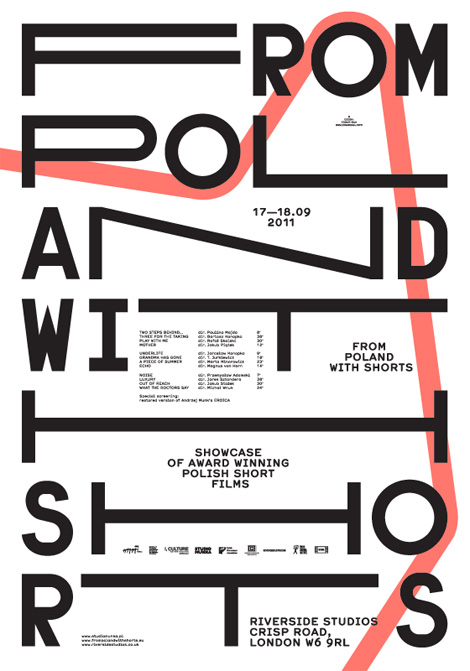
Edgar Bak is a talented designer based out of Poland. A graduate of the Academy of Fine Arts in Warsaw, he can now be found art directing for various magazines and teaching typography and information architecture classes at the School of Form in Poznan. He was also a driving force behind Projekt: The Polish journal of visual art and design published by United Editions.

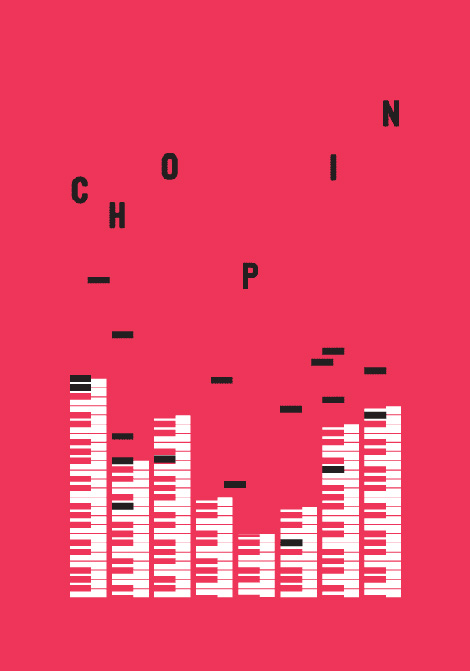
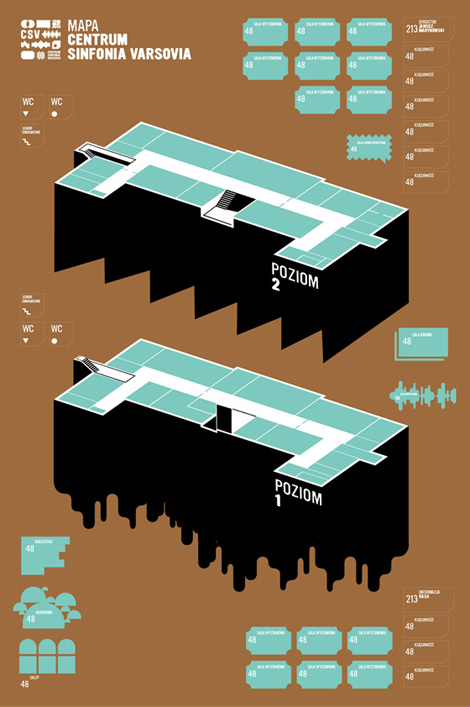
——————–
Also worth viewing:
Peak 21
Polish Book Covers
Polish Arts and Crafts Store Bag
Not signed up for the Grain Edit RSS Feed yet? Give it a try. Its free and yummy.
——————–
 Share on Facebook
Share on Facebook
Thanks to Signazon for being this week's sponsor.

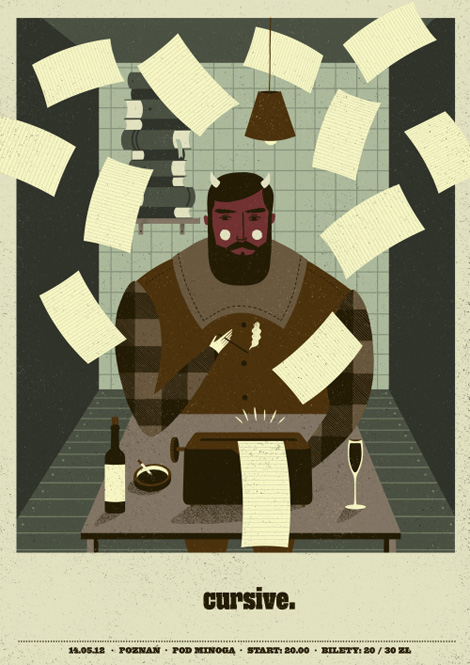
A landscape architect by trade, Polish illustrator David Ryski creates beautiful work that is tinged with humor and wit.

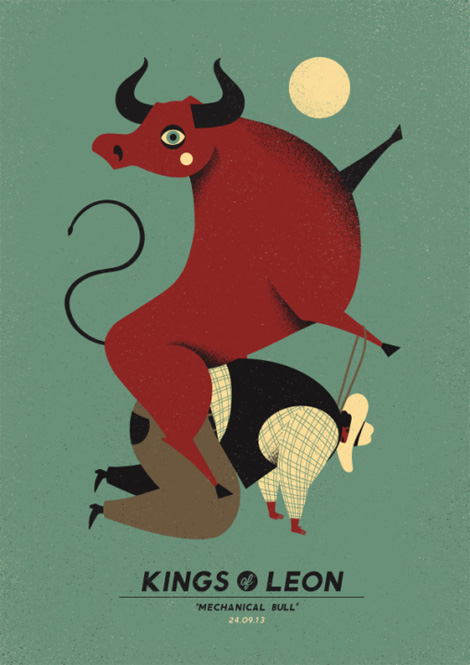
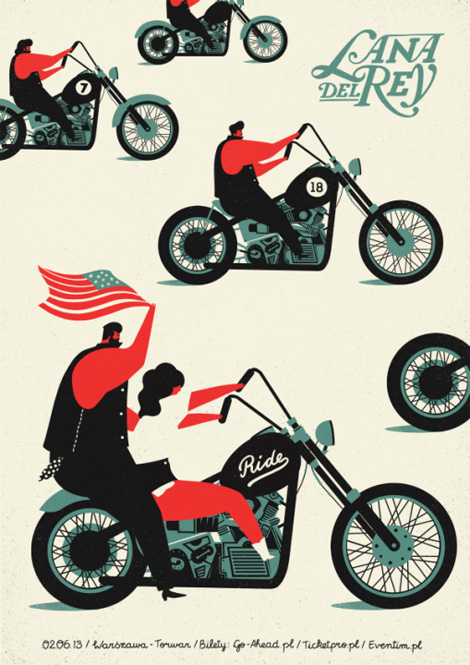
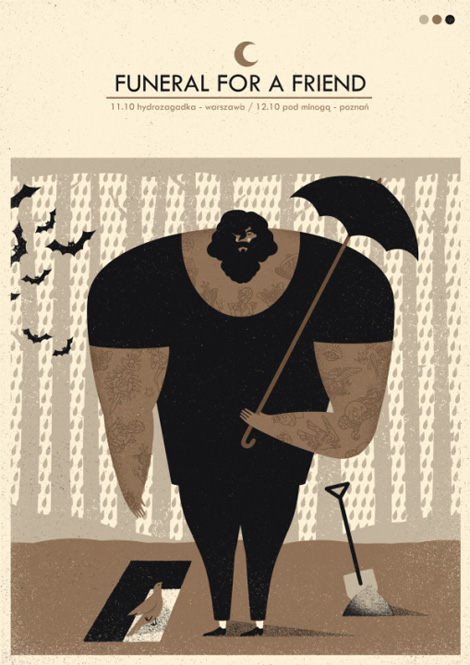

 Share on Facebook
Share on Facebook
RSS Sponsor: Try Squarespace today for free at squarespace.com

By: Grant Overstake,
on 7/26/2013
Blog:
(
Login to Add to MyJacketFlap)
JacketFlap tags:
Chile,
Uncategorized,
Canada,
Japan,
Taiwan,
Amazon,
Philippines,
Mexico,
France,
Australia,
India,
Poland,
Germany,
New Zealand,
Pakistan,
Puerto Rico,
Belgium,
Spain,
Slovenia,
United Kingdom,
Finland,
South Africa,
Brazil,
Singapore,
Nicaragua,
Ireland,
Netherlands,
Italy,
Turkey,
Israel,
Switzerland,
Nigeria,
Sweden,
Indonesia,
Mongolia,
Thailand,
Argentina,
Morocco,
Peru,
Jamaica,
Norway,
Egypt,
Indiebound,
Iceland,
Venezuela,
Bahamas,
Denmark,
Greece,
United States,
Portugal,
Czech Republic,
Colombia,
Romania,
Croatia,
Saudi Arabia,
Hong Kong,
Ukraine,
Jordan,
Yemen,
Algeria,
Hungary,
Bermuda,
Ecuador,
Bulgaria,
Estonia,
Tunisia,
Trinidad and Tobago,
Girls Sports,
Bahrain,
Lithuania,
Namibia,
United Arab Emirates,
Grant Overstake,
Inspirational Sports Stories,
Maggie Vaults Over the Moon,
young adult sports,
KSHSAA,
Pole Vault Fiction,
Track and Field Stories,
sports novels,
Recommended sports books for teens,
Watermark Books and Cafe,
Kansas State High School Activities Association Journal,
Austria Botswana,
Insirational Sports Books,
Isle of Man,
Republic of Korea,
Russian Federation,
Add a tag
Maggie Steele, the storybook heroine who vaults over the moon, has been attracting thousands of visitors from around the world. So many visitors, in fact, that she’s using a time zone map to keep track of them all.* People are … Continue reading →
Polish CG/VFX studio Platige Image, producer of acclaimed shorts such as Paths of Hate, Fallen Art, and The Cathedral, is currently in production on its first feature, Another Day of Life. The film will challenge audience’s perceptions of what types of stories can be told through animation. It is based on the book of the same name by renegade Polish journalist Ryszard Kapuściński, who, according to another one of his books that I own, “befriended Che Guevara, Salvador Allende, and Patrice Lumumba; witnessed twenty-seven coups and revolutions; and was sentenced to death four times.”
The film, an animation/live-action hybrid, will recount Kapuściński’s life-altering experiences during the Angolan Civil War in 1975. The directors attached to the project are Spanish filmmaker Raul de la Fuente (Nömadak Tx) and Platige’s Damian Nenow (Paths of Hate). Nenow and the producers of the film will discuss the project next week at Annecy.
For more details, go to AnotherDayofLifeFilm.com.

By: Jerry Beck,
on 5/12/2013
Blog:
Cartoon Brew
(
Login to Add to MyJacketFlap)
JacketFlap tags:
Music Videos,
Poland,
The Netherlands,
Binary,
Fit,
Iron and Wine,
Hayley Morris,
Eric Deuel,
Job Joris & Marieke,
Nicos Livesey,
Renata Gąsiorowska,
Spencer Day,
Tom Bunker,
US,
UK,
Add a tag
Our semi-regular roundup of interesting, creative and original animated music videos.
Music video for Alphabets Heaven.
“The Mystery of You” directed by Eric Deuel (US)
Music video for Spencer Day.
“Been Too Long” (“Duurt te Lang”) directed by Job, Joris & Marieke (The Netherlands)
Music video for Fit
Music video for Binary.
Lead Animators (2D & 3D): Blanca Martinez de Rituerto & Joe Sparrow
Secondary 2D Animation: Andy Baker, Tom Bunker, Nicos Livesey
Music video for Iron and Wine
Behind-the-scenes video HERE
Director/Animator: Hayley Morris
Fabricators: Hayley Morris, Denise Hauser and Randy Bretzin
Color Correction: Evan Kultangwatana
Model for watercolor animation: Louise Sheldon
Imagine surviving 1 ghetto, 10 concentration camps and 2 death marches. Well, here is the story of a boy who did just that.
At 10 years old, Yanek Gruener's life means friends, school and most importantly, being surrounded by loving relatives all living in the center of Krakow, Poland. But his relatives know that soon something is going to happen - after all, they are Jews in a Europe that Hitler wants to make "Jew free." Sure enough, only six days after the German invasion of Poland, Nazi soldiers march into Krakow, and not long after that, one after another rights, privileges, pleasures, food and freedom are denied its Jewish citizens, until, in 1942, when Yanek is 12, the Nazis begin building the wall that will become the Krakow Ghetto and Yanek soon finds himself living there along with thousands of other displaced Jews.
In the ghetto, Yanek and his father prove to be very resourceful in order to survive. When roundups start, to avoid be sent "to the east" and an unknown future, Yanek finds an abandoned pigeon coop on the roof of their building where the family takes up residence. To feed his family, Yanek's father manages to get bread under very dangerous circumstances. And, most telling of all, despite the danger after the Nazis forbide Jews to practice their religion, his father gets together a
minyan (a quorum of 10
bar mitvahed men) late one night for Yanek's very unusual secret
bar mitvah.
The ghetto proves to be only the beginning of Yanek's journey through a system of concentration camps, where survival sometimes depends of cunning, sometimes on luck, always knowing that your life is in the hands of sadistic Nazis, some of whom like to kill Jews for sport.
By the time Yanek is sent from the ghetto to the first of ten concentration camps, he has lost his family in a roundup and deportation heading "east" but finds his Uncle Moshe at Plaszów Concentration Camp. You may remember Plaszów from
Schindler's List, the camp run by the very, very cruel SS Commander Amon Goeth. It is here that Yanek's Uncle Moshe teaches him survival skills that will serve him well at each camp he is sent to. As a result, Yanek's resolve to survive almost never falters, even when he comes very close to dying.
Prisoner B-3087 (B for Birkenau) is based on the life of the real Yanek/Jack Gruener. It is told in a simple, straightforward manner, narrated in the first person by the fictional Yanek, but the voice of the actual Gruener comes through clearly, giving it a sense of authenticity. Yanek never, no matter how badly he is treated, gives into feeling victimized, which is amazing, but may also account for his strong will to survive. Yanek's descriptions of certain things that he either witnesses or that were done to him are sometimes a bit hard to read, but never gratuitous and not including them would sanitize Nazi cruelty to every degree.
The narration skillfully balances these cruel, sadistic acts against the Jews with some real heartwarming moments, like the night of Yanek's secret
bar mitvah, a kindness Yanek was to repay in Birkenau two years later when he is the first to volunteer to be part of a
minyan for another 13 year old boy's forbidden
bar mitvah, even though getting caught would mean certain death.
After I read
Prisoner B-3087, I felt compelled to do two things. First, I had to make an outline of the places and events in Yanek Gruener's life as he was sent from camp to camp, sometimes in cattle cars, sometimes on foot in freezing weather. Second, I would have liked a map to get a real sense not just of where Yanek was at each part of his life under the Nazis, but also the distances he traveled. I think these would give a real appreciation of his survival. But since they didn't include map, and others might fell as I do, I found this one at the
Jewish Virtual Library and modified it a bit to reflect Yanek's experience:
 |
| Click to enlarge |
Prisoner B-3087 is a book that really must be read to be fully appreciated. Yanek/Jack Gruener's story is incredible, haunting, compelling, heart wrenching, rewarding and not to be missed (and you will find out how Yanek became Jack).
This book is recommended for readers age 11+
This book was received as an E-ARC from
Net Galley
Starting with its title—Dziwne dziwy, czyli… Baśń o Korsarzu Palemonie—this Polish film is nearly impossible to explain. As soon as the title of the film appears onscreen, the letters of the title morph into question marks and exclamation points, which then melt into a flag adorned with a skull that is smoking a pipe. The skull emits pipe smoke out of its eye, which quickly engulfs the screen. Then, the sun breaks through and shines. And that’s just the first 10 seconds! Add another 30 minutes of uninterrupted surrealist insanity and you begin to get an idea of this incredible piece of film.
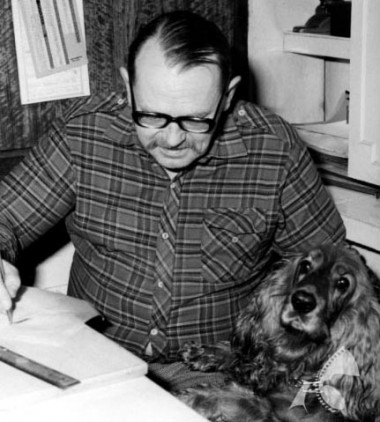 Krzysztof Dębowski (pictured left), a veteran of the Polish animation scene, was in the twilight of his career when he made this film in 1986. It’s a difficult film to classify because it doesn’t fit into any conventional timeline of animation history. Some of the character designs are a throwback to the blocky ‘cartoon modern’ style of Sixties and Seventies Eastern European animation, but the facial expressions resemble the crude graphic exaggeration of manga and the cartoonish painted stills foreshadow the Spumco style of the early-1990s. Such efforts to compare the film’s individual elements to other visual work are inadequate though. It is the totality of Dębowski’s vision that is so striking and utterly original.
Krzysztof Dębowski (pictured left), a veteran of the Polish animation scene, was in the twilight of his career when he made this film in 1986. It’s a difficult film to classify because it doesn’t fit into any conventional timeline of animation history. Some of the character designs are a throwback to the blocky ‘cartoon modern’ style of Sixties and Seventies Eastern European animation, but the facial expressions resemble the crude graphic exaggeration of manga and the cartoonish painted stills foreshadow the Spumco style of the early-1990s. Such efforts to compare the film’s individual elements to other visual work are inadequate though. It is the totality of Dębowski’s vision that is so striking and utterly original.
Dębowski gleefully disregards the Western animator’s narrow-minded obsession with achieving the “illusion of life.” He breaks every rule that is sacred to the character animator and moves things however he damn pleases. His universe functions on the level of pure graphic cinema and exists exclusively on its own terms. Characters distort in grotesque ways, and they move in fits and starts that suggest human locomotion in only the most abstract sense. Dębowski has no use for things like perspective and instead suggests space through design and movement. Effects like waves, clouds and cannon fire are conveyed through gorgeous patterns of shapes and lines that move to their own unique rhythms.

The film is visually lush, but its heavy narration makes it difficult to decipher. I called upon Pawel Wieszczecinski, a film studies major at the New School in Manhattan as well as the founder of the Kinoscope film series, to explain what I was looking at. Here’s what he told me:
The title is “A Fairytale about Palemon the Pirate.” This particular film is based on a fairytale by a famous fable writer named Jan Brzechwa. His stories are generally aimed at young audiences. I even remember his fairytales from when I was a kid. He is definitely the most famous fairytale writer in Poland. This particular piece was written in 1956. It’s about a King who dies, but before he does so, he announces to his four daughters that the one who will overcome the Palemon the Pirate will get the crown. Palemon owns all the seas and his empire is enormous. Eventually one of King’s daughters, the ugliest one, conquers Palemon’s empire and she becomes the new Queen. But besides that, she also hooks up with Palemon and they get married.
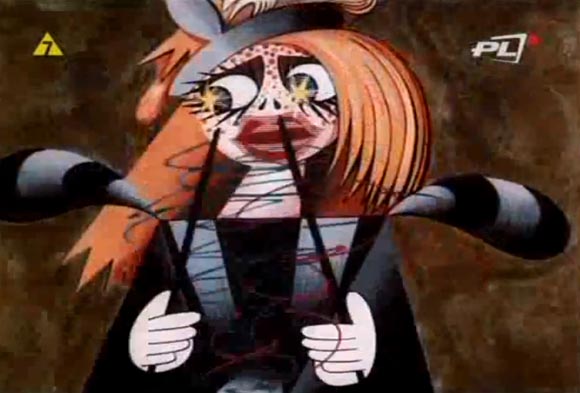
Dębowski should be an animation legend on the basis of this film alone. Yet, I’d never heard of him until I randomly stumbled across this film during a late-night cartoon binge. Further searching yields absolutely nothing written about him in the English language. His lack of recognition in the West is a shame considering his prolific body of work. He started directing in 1960 at Studio Miniatur Filmowych and made dozens of films over the next thirty years. The only other example of his work that I can find online is this early piece called Wzeszło słoneczko.






View Next 25 Posts
![]()

 Krzysztof Dębowski (pictured left), a veteran of the Polish animation scene, was in the twilight of his career when he made this film in 1986. It’s a difficult film to classify because it doesn’t fit into any conventional timeline of animation history. Some of the character designs are a throwback to the blocky ‘cartoon modern’ style of Sixties and Seventies Eastern European animation, but the facial expressions resemble the crude graphic exaggeration of manga and the cartoonish painted stills foreshadow the Spumco style of the early-1990s. Such efforts to compare the film’s individual elements to other visual work are inadequate though. It is the totality of Dębowski’s vision that is so striking and utterly original.
Krzysztof Dębowski (pictured left), a veteran of the Polish animation scene, was in the twilight of his career when he made this film in 1986. It’s a difficult film to classify because it doesn’t fit into any conventional timeline of animation history. Some of the character designs are a throwback to the blocky ‘cartoon modern’ style of Sixties and Seventies Eastern European animation, but the facial expressions resemble the crude graphic exaggeration of manga and the cartoonish painted stills foreshadow the Spumco style of the early-1990s. Such efforts to compare the film’s individual elements to other visual work are inadequate though. It is the totality of Dębowski’s vision that is so striking and utterly original. 







I have a LOT to say about Woman Named Smith & have just started Slippy McGee & thanks for the tip off! Adore the first already!
Well, those two are as good as it’s going to get, so savor them.